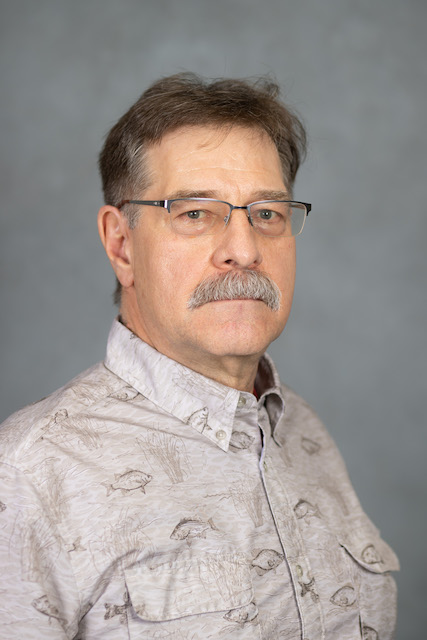Austin Peay students, professor to take part in NIST Stars program to find better stellar measurements
 CLARKSVILLE. Tenn. - Dr. J. Allyn Smith, a professor in the Department of Physics,
Engineering and Astronomy at Austin Peay State University, and his students have been
invited to take part in the NIST Stars program, a research and development initiative
led by the National Institute of Standards and Technology.
CLARKSVILLE. Tenn. - Dr. J. Allyn Smith, a professor in the Department of Physics,
Engineering and Astronomy at Austin Peay State University, and his students have been
invited to take part in the NIST Stars program, a research and development initiative
led by the National Institute of Standards and Technology.
Smith’s team of undergraduate students will gain valuable research experience while working on the project, which aims to find a way to compare stars by calibrating them to a photodiode rather than to the star Vega - which has long functioned as the baseline for calibrating the photometric brightness scale.
“The ultimate goal is to figure out how bright a star is – how many photons per square centimeter per hertz per second is coming off the surface of that star, or at least coming to Earth,” Smith said. “The undergraduate students will have the opportunity to work with telescopes, imagers and spectrographs, which will help them gain hands-on experience in their field of study.”
Some of that research will happen in Chile, perhaps as early as this summer. Smith is working on extra funding to cover the students’ costs for continuing research opportunities in the NIST program.
Calibrating the stars
The NIST Stars program contributes to technological advancement through innovative research and development in measurement science. The program could help weather and climate research satellites with orbit calibration and assist astronomers with calibrating measurements of dark energy, which “will determine the ultimate fate of our universe,” according to the NIST Stars website.
Dr. Susana Deustua is the lead physicist in the NIST Stars program. She has also known Smith for years. They started working on ways to better calibrate stars more than 20 years ago.
“The question we had is how can we tell how bright something is compared to Vega, which is the default standard – and the absolute worst choice for a standard,” Smith said. “So, we had this idea to compare stars to a photodiode that we could calibrate. It was a Department of Energy program, and we did a smash-up job – we figured out how to characterize it and everything, except for the final step, the absolute calibration.”
Eventually, the program was entangled with another space initiative and lost momentum and government backing.
Smith and Deustua kept in touch, and when she joined NIST about 1 ½ years ago, she resurrected the project. Improvements in measuring and modeling atmospheric interference also helped give the research new life.
Taking the next steps
“NIST ran tests at Mount Hopkins outside of Tucson, Arizona, for several years using a small telescope, looking at a calibrated light source and some stars,” Smith added.
This helpful article explains NIST’s recent efforts at Mount Hopkins.
“We’re about to go bigger than that,” Smith said.
That work will start this year with a 0.5-meter infrared telescope at a European Southern Observatory site in the Chilean Atacama Desert, specifically the Paranal Observatory. The Chilean site offers more clear nights and less atmospheric moisture than Mount Hopkins.
The NIST Stars website offers resources such as publications, reports and presentations related to the program’s research activities, as well as links to related programs and organizations.